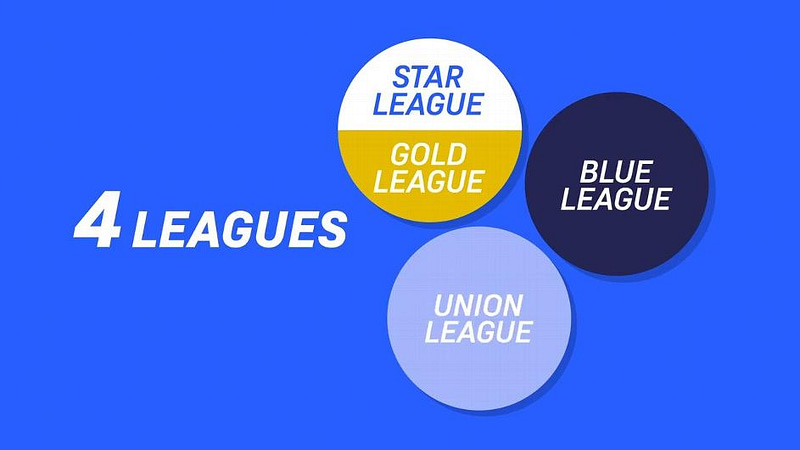The Super League Saga: A New Chapter with the Unify League
Well, folks, it seems like the saga of the Super League is far from over. The masterminds behind this ambitious project are back with a new proposal, and it’s called the “Unify League.” A22 Sports, the company spearheading this initiative, has officially petitioned UEFA to recognize their new cross-border tournament. This comes on the heels of a significant ruling by the European Court of Justice (ECJ) nearly a year ago, which found that UEFA held a dominant position in European football. The court ruled that UEFA could not oppose the creation of other cross-border tournaments, provided they met specific criteria.
So, what are these criteria, you ask? Well, any new tournament must have a qualification process that’s both inclusive and meritocratic, and it must comply with the FIFA match calendar. Sounds simple enough, right? But as with anything in the world of football, it’s never that straightforward.
Is the Unify League a Real Rival to the Champions League?
Not quite yet. There are still plenty of hurdles to overcome before the Unify League can truly rival the Champions League. The ECJ’s judgment essentially found that UEFA’s regulations gave them too much power to block rival competitions. In response, UEFA quickly drafted new regulations that they claim comply with the ECJ ruling. Some of these regulations focus on open and meritocratic qualification, which the Unify League seems to meet. However, A22 Sports argues that other regulations do not comply with the ECJ ruling.
One such regulation prohibits any new club competition from “adversely affecting the good functioning” of UEFA tournaments. A22 Sports contends that this rule essentially forces teams who qualify for UEFA competitions to participate in them. We haven’t heard from UEFA yet, but it’s safe to assume they believe their rules are compliant with the ECJ rulings. So, expect more legal wrangling and possibly some letters to the European Court for clarification. But that’s just the first hurdle…
What Comes Next?
Even if A22 Sports clears the legal hurdles and gets their way, they still need to convince clubs that it’s in their best interest to join the Unify League. And that’s no small feat. While clubs are interested in prestige, history, and fan engagement, let’s be honest—money is a prime motivator. It’s unclear how the Unify League’s business model will generate more revenue than the existing UEFA competitions, especially the Champions League, which is often compared to the Super Bowl in terms of its global appeal.
What’s the Business Model for the Unify League?
Details are scarce, but it seems the Unify League plans to have sponsors, much like UEFA. The big difference lies in media rights. Instead of selling rights to broadcasters and streamers, the Unify League will have its own streaming service, the Unify Platform. All games will be shown for free, albeit with advertising. For those who prefer an ad-free experience, there will be “affordable premium subscriptions” offering more technological features than standard TV.
Can This Model Really Generate More Revenue?
This question raises several obvious concerns. If showing games for free with commercial breaks is the key to making more money, why haven’t existing broadcasters adopted this model? And if affordable premium subscriptions are the secret to increased revenue, why hasn’t this been done before?
There’s some merit in questioning the current pricing model. Free-to-air broadcasts can attract larger audiences and more exposure for sponsors, potentially leading to higher ad rates. Lower subscription fees might attract more subscribers, resulting in higher overall revenue. However, it’s a leap of faith to believe that the Unify League can succeed where others have failed. That said, A22 Sports is convinced their format will be more exciting and attract larger audiences.
How Will the Unify League Be Structured?
The Unify League will feature four leagues, with the top two—Star League and Gold League—comprising 16 clubs each. Each league is split into two groups of eight, and teams will play each other home and away for a total of 14 games. The top four in each group will qualify for the quarterfinals, which will also be home and away fixtures. The semifinals and final will be single-leg affairs.
- Total games: 246, slightly more than the existing “Swiss Model” Champions League (237 games).
- Number of clubs: 32 in the combined Star and Gold Leagues, compared to 36 in the Champions League.
Whether this format is more exciting remains to be seen. There could be a lot of repetitive matchups and potentially meaningless games, as teams might know their fate with several games to go. This concept isn’t new, and we’re still unsure how the first-ever Champions League matchday 8 will play out with all 36 teams playing simultaneously.
What About the Merit-Based and Open Criteria?
The ECJ ruling requires the Unify League to be “merit-based” and “open to all,” which could backfire. The old European Super League had 12 guaranteed mega-clubs, with 15 in the original proposal. If the Unify League had started this season, clubs like Borussia Dortmund, Liverpool, Aston Villa, Barcelona, and Atletico Madrid would not be guaranteed a spot. They would need to battle through multiple qualifying rounds for a playoff spot.
Clubs prefer certainty, especially when it comes to revenue. The next league down, the Gold League, would presumably generate less revenue than the top league, similar to how the Europa League makes less money than the Champions League. It’s a tough sell, and convincing clubs that the Unify League is more lucrative will be challenging.
Is There a Way to Make the Unify League More Appealing?
The only way the Unify League could become more appealing is if someone offers clubs a substantial financial guarantee, promising more than what they’re currently making. UEFA generates around €4.4 billion ($4.6bn) from their three competitions. A22 Sports might be able to run a leaner tournament with lower administrative costs, but they’ll still need to exceed that €4.4bn figure to make it worthwhile.
Running their own platform means additional marketing, technology, and production costs, which are currently absorbed by broadcasters. It would take someone willing to invest €6bn a year to cover the downside and guarantee that clubs are better off with the Unify League.
What Could Go Wrong?
The nightmare scenario is if the Unify League and UEFA end up competing directly, with some clubs joining one and others sticking with the other. This could lead to a fragmented landscape, weakening both competitions. The success of the Champions League relies on having the best clubs in one place. If half of them leave, the interest won’t just be halved; it could decline significantly.
What’s Next for the Unify League?
Expect a lot of legal back-and-forth and possibly some ECJ clarification. Ultimately, this feels like a power move by A22 Sports to get UEFA to the negotiating table. However, it’s hard to see how A22 Sports has any leverage, given their business model seems shaky and no major clubs, aside from Real Madrid, have publicly supported them. Unless there’s a mysterious benefactor with billions to bankroll the project, the Unify League faces an uphill battle.
Originally Written by: Gabriele Marcotti





















